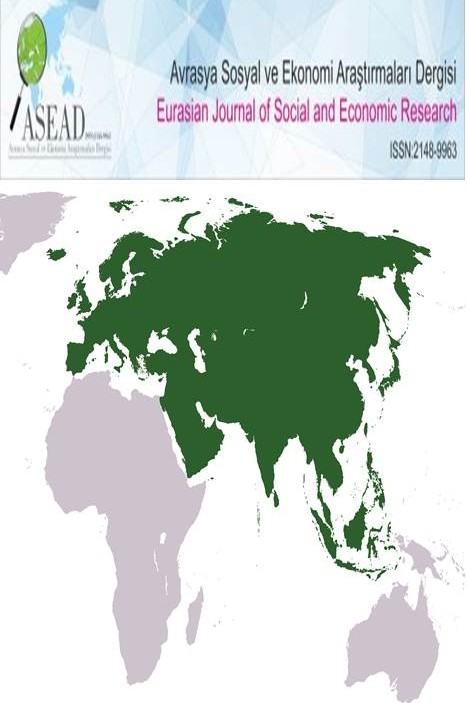A NEW HETERODOX APPROACH: WACKONOMICS
Wackonomics, Economics of Sports, Economics of Religious, Economics of Health, Economics of Law
___
- BECKER, Gary S. (1968), “Crime and Punishment: An Economic Approach”, The Journal of Political Economy, 76(2), p. 169-217.
- BECKER, Gary S. (1992). Nobel lecture: The economic way of looking at behavior. Journal of Political Economy, 101, p. 385.
- CORNES, R. and Sandler, T. (1996), “the Theory of Externalities, Public Goods, and Club Goods. 2nd Ed., Cambridge, Cambridge University Press, New York
- DAVID, S. (2004). “The art of teaching economics”. International Review of Economic Education, 3(1), p. 63-76.
- DENNIS W., and Avi, W. (2001). “The economics of religion, Jewish survival, and Jewish attitudes toward competition in Torah education”. Journal of Legal Studies, 30(1), p. 253-275.
- EGGERTSSON, T. (1995), “On the economics of economics”. Kyklos, 48(2), p. 201-210. FIONA, G., Dennis, T., and Robert, W. (2000), “Team performance: The case of English premiership football”. Managerial and Decision Economics”, 21(1), p. 31-45.
- FRANCESCO, F., Galbiati, R., and Vertova, P. (2009), “The deterrent effects of prison: Evidence from a natural experiment”, J.P.E, 117 (2), p. 257-80.
- FREY, B.S. and Meier, S. (2003), “Selfish and Indoctrinated Economists”, Zurich IEER Working Paper, No. 103
- GÜRPINAR, B. (2008), “Hukuk ve Ekonominin Ortak Temelleri” Hukuk ve Ekonomi’ Akımı”, Dumlupınar Üniversitesi Sosyal Bilimler Dergisi, 28, p. 161-180.
- LAURENCE, R. (1990), “Religious practice: A human capital approach”, Journal for the Scientific Study of Religion, 29(3), p. 297- 314.
- MARGARET, M., and Peter, T. (2000), “Death and dignity terminal Illness and the market for non-treatment”, Journal of Public Economics, 76(2), p. 263-294.
- POLINSKY, A. (1989). Mitchell, An introduction to law and economics, Boston: Little, Brown and Company.
- STEPHEN, H., and David, P (2001), “Economics and euthanasia”, Health Services Management Research, 14(1), p. 62-63.
- SHEILA C. (2007), “Variety of methodological approach in economics”, Journal of Economic Surveys, 21(3), p. 447-465.
- STEPHEN, D., and John, G. (1996). “The demand for football in the regions of England and Wales”, Regional Studies, 30(5), p. 43-453.
- (1998), “Performance, revenue, and cross subsidization in the football league, 1927-1994”, Economic History Review, 51(4), p. 763-785.
- THOMAS, F. (1996), “Legal pragmatism and the law and economics movement”, Georgetown Law Journal, 84.
- TOM, C. (2004), “What do we know about ourselves? On the economics of economics”. Kyklos, 57(2), p. 197-215.
- Yayın Aralığı: Yılda 4 Sayı
- Başlangıç: 2014
- Yayıncı: İrfan TÜRKOĞLU
ÇEVRESEL FARKINDALIK GELİŞTİRMEDE YARATICI DRAMA YÖNTEMİ
H. Gözde ERTÜRK KARA, Zeynep Nalan YILMAZ, Özge AYDIN ŞENGÜL
AKLA HİTAP EDEN DÜŞÜNCENİN SANATI: KAVRAMSAL SANATA GENEL BİR BAKIŞ
KUR’ÂN KISSALARINDA BİR ANLATIM ÜSLÛBU OLARAK HZ. PEYGAMBER’İ KISSAYA DÂHİL ETME
A NEW HETERODOX APPROACH: WACKONOMICS
TÜRKİYE’NİN İHRACATININ KOMŞU DEVLETLER İLE MUKAYESESİ (1913-1929)
ANAMUR MUZ ÜRETİCİLERİNİN SORUNLARI VE BÜYÜME OLANAKLARI
Ali Naci KARABULUT, Barış ALTUNTAŞ
OKUL ÖNCESİ EĞİTİM ÖĞRETMENLERİNİN ERKEN OKUMA YAZMAYLA İLGİLİ İNANÇLARININ İNCELENMESİ
